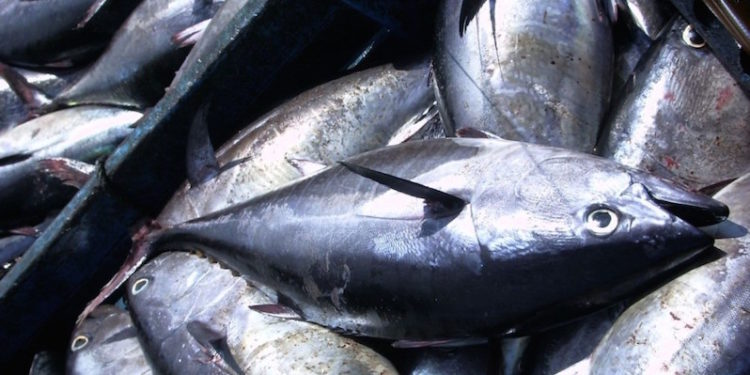Bluefin tuna in the Mediterranean and Atlantic are doing better, according to a report by the French National Committee for Fisheries and Fish Farming (CNPMEM). Although the situation today is not perfect, bluefin have not disappeared as some NGOs had loudly predicted would happen by 2012.
CNPMEM also points out that the likelihood is strong that the stock will reach its MSY level by 2022, which is remarkable for such a long-lived species that can have a lifetime of forty years.
They report that the last stock assessment for bluefin tuna in the Eastern Atlantic and Mediterranean was held in September 2013 and comment that MSY reference points are not yet met, but the situation conforms to ICCAT objectives,while biomass assessments show a sharp increase and aerial surveys indicate stock improvement. At the same time, catches have been drastically reduced and minimum landing sizes are respected.
Of the 13,500 tonne ICCAT quota this year, Europe has 7939 tonnes and 2471 tonnes are allocated to France, divided between POs and non-sector vessels depending on the fishing gear used. Individual quotas are allocated to vessels over 24 metres. 2199 tonnes of France’s quota is for the Mediterranean, 247 tonnes for Atlantic fisheries and 25 tonnes are kept back to cover leisure fishing and by-catches.
The majority of Mediterranean purse seine fishing for bluefin is for fish that is kept alive and supplied to ranching operations that keep fish in cages and feed them until they are ready to be sold. These ranches are primarily in Spain, Italy, Malta, Greece, Turkey and Croatia.
Since 2013 the purse seiners are limited to fishing only between 26th May and 24th June and in 2009, 28 French purse seiners were involved in the fishery. By 2012 this number had been reduced to only nine as stringent restrictions were put in place. For 2013 and 2014 seasons, with increasing quotas, licences were issued to 17 purse seiners to fish for tuna.









